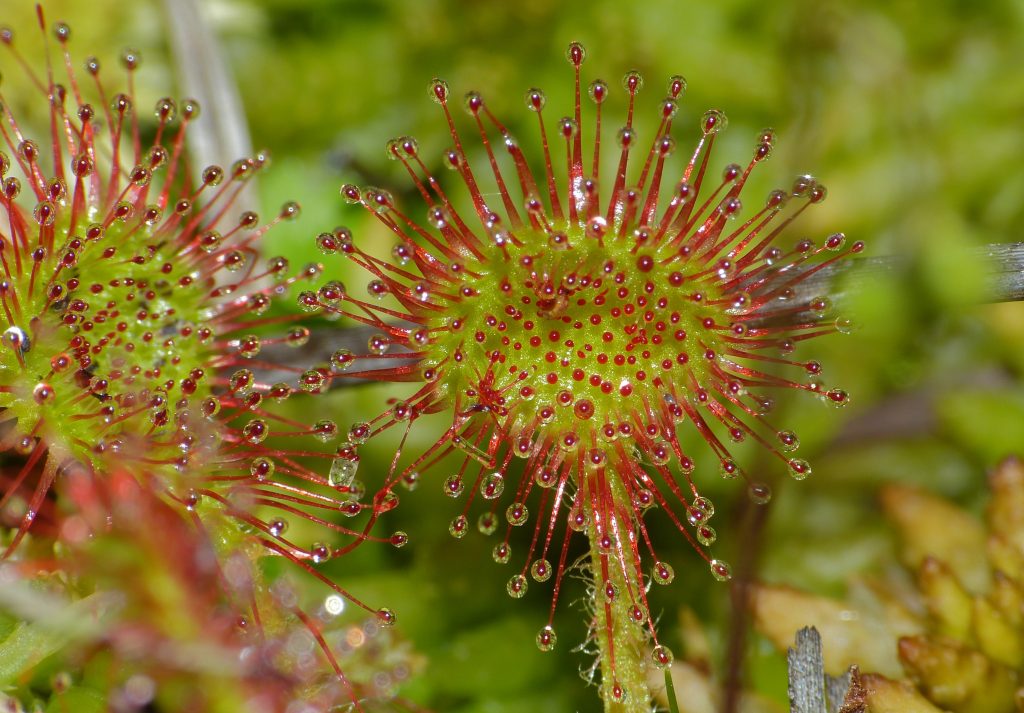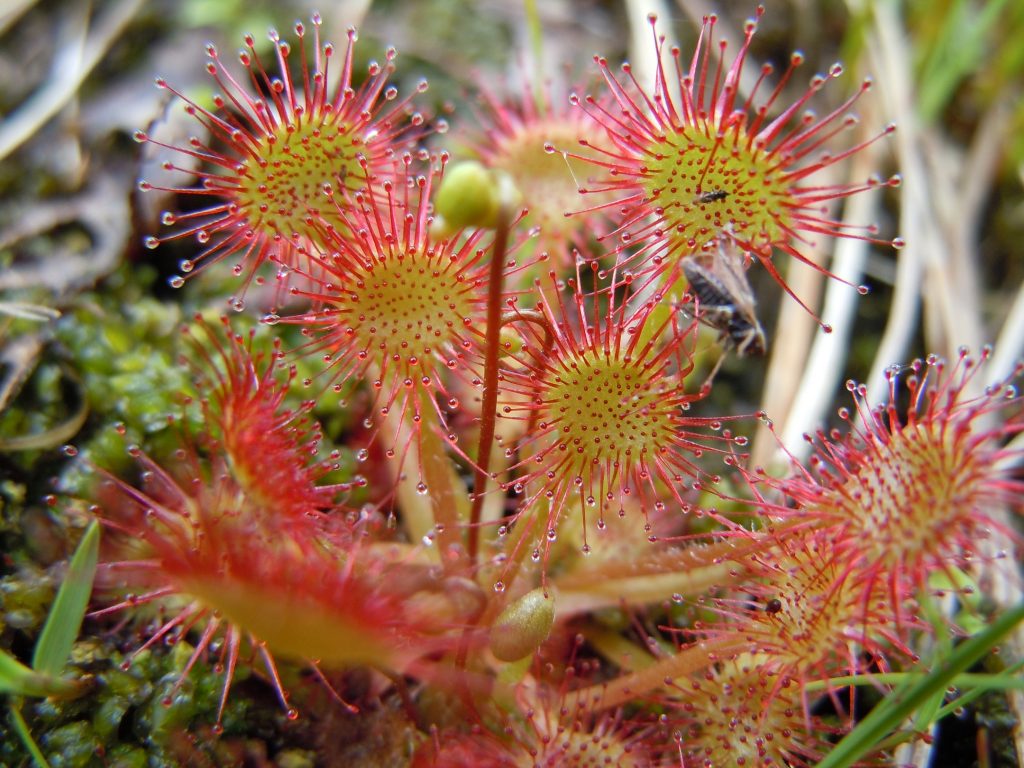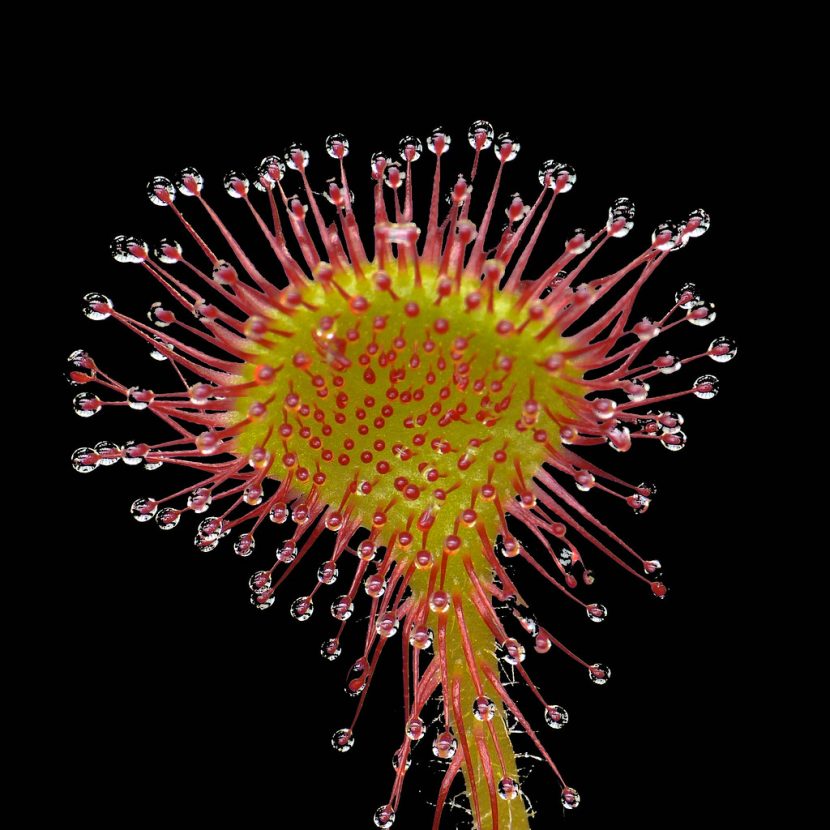
Image - Wikimedia / Bernard DUPONT
Carnivorous plants have a reputation for being very complicated, but the truth is that their main secret is in the water: if rain or distilled water is used, they become quite easy to care for, especially if we talk about the Sundew rotundifolia.
This is a small but incredibly pretty species, which grown in plastic pots alone or with other carnivores, in places where sunlight does not reach directly.
Origin and characteristics of Sundew rotundifolia

Image - Wikimedia / Sarkan47
It is a carnivorous plant known as common sundew or round-leaved sundew native to northern Europe, much of Siberia, northern North America, Korea, Japan, and New Guinea.
Lives in peat bogs and wetlands, where its roots find so little nutrients that their leaves have had no choice but to adapt, and they have done so by becoming trap leaves. In the upper part of each one, we will see that they have red glandular hairs which secrete a sticky mucilage. If an insect lands on them, it gets trapped, and ends up dying. Then the Drosera enzymes digest your body.
Its size is, as we said, reduced: no more than 5 centimeters in diameter by 1-2 centimeters high; however, its inflorescence reaches up to 25 centimeters high. Its flowers grow on a stem, which emerges from the center of the rosette of leaves, and has five white or pink petals. The seeds are elongated, light brown in color, and 1 to 1,5 millimeters in size.
Living in areas where winters are very cold, it produces a swollen shoot at ground level with tight leaves that will help it stay alive until spring returns.
What are their cares?
If you want to have a copy, we recommend that you provide it with the following care:
Location
La Sundew rotundifolia is a carnivore that needs to feel the passing of the seasons, so It must be outside, in semi-shade.
Substratum
It grows in bogs and wetlands, but in cultivation it is kept in pots with a mixture of blond peat and perlite in equal parts (on sale here).
It is important to moisten the substrate well before filling the pot with it, as this makes it easier for it to overcome the transplant to the plant. Use distilled or rain water for this.
Irrigation

Image - Wikimedia / Noah Elhardt
Irrigation must be frecuenteespecially during the summer. In this season you can put a plate under it and fill it every time you see it empty, but the rest of the year and especially in winter it is better to water the substrate 2-3 times a week.
Use rain or distilled water.
Subscriber
They should not be paid carnivorous plants. Its roots would be burned.
Multiplication
If you want to get new copies of Sundew rotundifoliaThe easiest way is to plant it in a slightly wide plastic pot, and when its flowers wither, cut them and bury them in the substrate, or in another pot.
But if you don't have a copy yet, you can buy seeds in spring, and sow them in a container -plastic-, with blond peat mixed with perlite in equal parts. If you keep it moist and in semi-shade, they will germinate in about two to three weeks.
Pruning
He does not need it. You just have to cut the dry leaves.
Transplant
It will be enough to do it only once or twice: just acquired and / or when it has occupied the entire pot. Do it in spring, and use plastic pots with drainage holes following this step by step:
- First, soak the mixture of peat moss and perlite in a basin of distilled water for a few minutes, until you see that it is very wet.
- Meanwhile, clean the pot with distilled water and a few drops of dishwasher. It is important to rinse well, so that no trace of foam remains, and dry it.
- Then, fill the pot with the substrate mixture, and poke a hole with your fingers in the center.
- Then extract the Sundew rotundifolia out of your old pot carefully, and insert it into the new one.
- Finally, finish filling the new pot and place it outside, in semi-shade.
Plagues and diseases

Image - Flickr / Mark Freeth
La Sundew rotundifolia it is quite resistant. It may have a mealybug, but nothing major. Anyway, as it is a small plant you can remove it with a brush.
Rusticity
Resists cold and frost up to -4ºC.
What uses does the Sundew rotundifolia?
It has several:
Ornamental
It is a very decorative plant. It is small, quite easy to care for, and it also resists frost. It is usually had together with other sunshades, pinguiculas, or even Saracen in plastic planters.
Culinary
In Scotland they take advantage of it to make colorants.
Medicinal
The extract produced from this species has anti-inflammatory, antispasmodic and antiangiogenic properties.
Where to buy?
It is one of the most common carnivores in nurseries, where they are sold for a price of about 6-7 euros. Although you can also get it from here:
